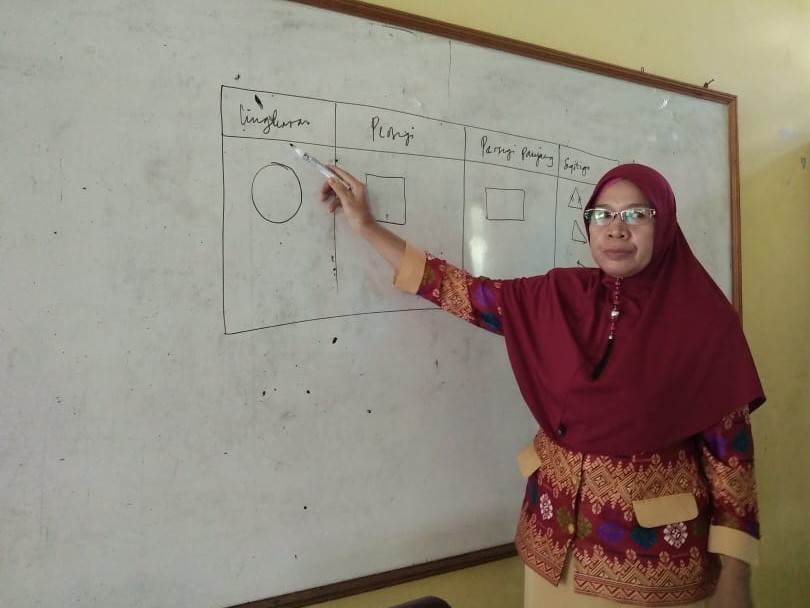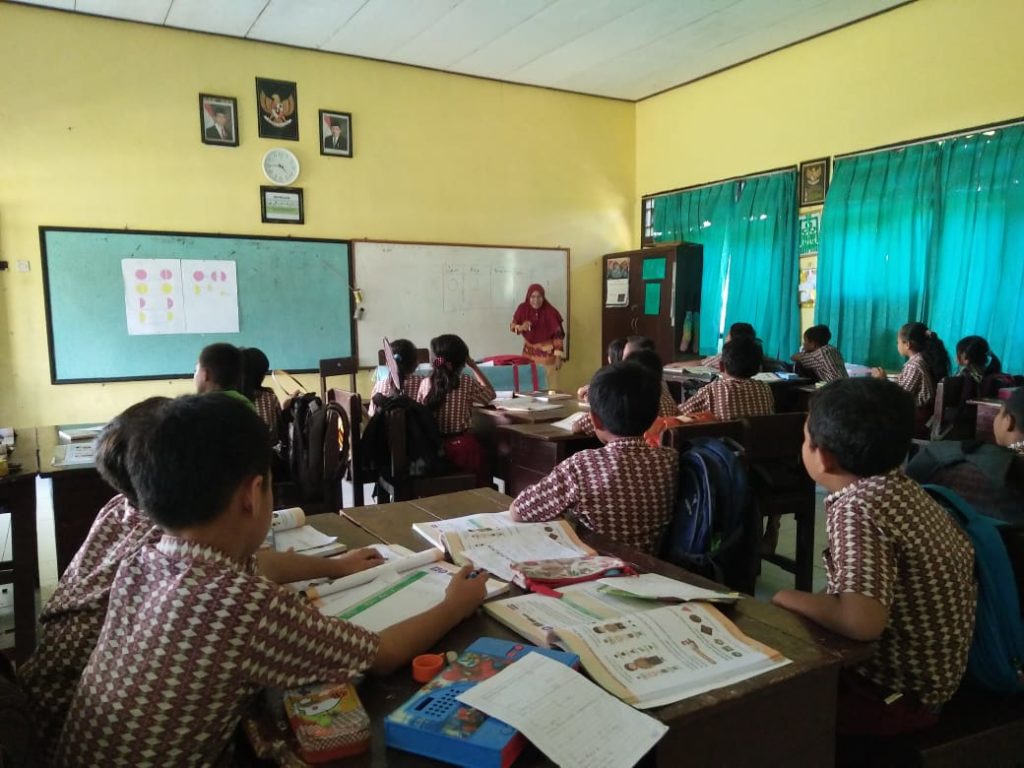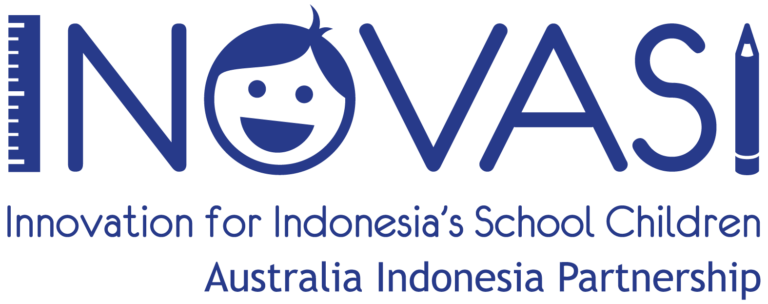
In her opinion, exploring potentials and finding learning solutions were her biggest motivations for participating in the INOVASI activities. These motivations were actively applied when she took part in the training and mentoring during the Basic Numeracy Enhancement Pilot Program (Program Rintisan Peningkatan Numerasi Dasar, or PERMATA) in cluster one of Lopok district from 2018 to early 2019.
“I gained a lot of knowledge about teaching, especially mathematics. Together with INOVASI, our insights increased,” said Siti Aisyah.
While teaching numeracy, especially in third grade, Siti found that there were still students who were not yet fluent in reading. There were also students who did not understand the meaning of sentences, so sometimes, it would take them longer to understand the material. Siti finally thought of a solution to overcome that challenge. By using the “local solution for local problems” approach, she created the Bag of Numbers medium, which made it easier for her to teach numeracy to students who were not fluent in reading and students who did not understand the meaning of sentences.
This Bag of Numbers is made of used manila paper and it is decorated with paper patches in the form of a rectangular bags that are inscribed with the words Thousands, Hundreds, Tens, and Units. Ice cream sticks are placed in each bag. In the Thousands bag, four ice cream sticks are placed, tied together with a rubber band, and these are then called 1000. The same procedure is followed with the Hundreds bag. Put three ice cream sticks in it; tie them together with a rubber band; and call the bundle 100.
Next, put two ice cream sticks in the Tens bag; tie them together with a rubber band; call them ten. The last is the Units pocket. Put one stick in, and the pocket reads units.
Siti explained these methods by using a Bag of Numbers. For example, to show the place value in the number 4325, the bag of thousands is filled with four bunches of four tied sticks, totaling 16 sticks and representing 4000. Then, in the Hundreds bag, in which three tied sticks represent 100, there are bunches of three tied sticks, totaling nine sticks and representing 300. In the Tens bag, there are two bunches of two tied sticks, meaning it takes four sticks to represent the value of 20 in 4325. Finally, the Units bag contains five single sticks, representing a value of five ones. As a result, with this Bag of Numbers, the students can understand that the sticks in the bag show the number 4325.

Furthermore, continued Siti Aisyah, the sticks placed in the Bag of Numbers helped the students quickly understand the place value of each number. All students can actively learn by using this learning medium. Students who have not been able to read or understand the meaning of sentences can now easily understand and answer questions correctly by utilizing the Bag of Numbers.
“We still use that medium every day—even though it’s only made from used paper, tamarind seeds, marbles, and other objects—especially in Mathematics,” said Siti Aisyah.
It doesn’t stop there. To increase students’ enthusiasm and motivation for learning, teachers also decorate the classrooms and display various kinds of learning media, including a Bag of Numbers to teach the value of place, a picture of fractions for teaching fractions, pictures of various kinds of shapes for teaching shapes, a transparent card with shading for teaching how to add and subtract fractions, and several other media, especially those used with the assistance of INOVASI.
“Thank God. My students have changed. They are now keener to learn mathematics, and their marks have improved as a result of the teaching and learning process,” said Siti enthusiastically.
When recalling her memories, this woman, who was born in Sumbawa on 20 December 1967, realized that her parents could not afford to pay for her schooling until university. Finally, it dawned on Siti that she wanted to become a teacher. In the past, to become a teacher, one only needed to enroll in a School of Teacher Education (Sekolah Pendidikan Guru, or SPG) and study for a fairly short time without having to go to college. Over time, after graduating from SPG, Siti took the civil servant candidate (Calon Pegawai Negeri Sipil, or CPNS) test as a teacher and passed as an elementary school teacher. Since 1989, Siti has served as an elementary school teacher.
“Alhamdulillah, to date I still love my profession as a teacher, even though previously I became a teacher due to the low economic power of my parents,” added Siti.
Siti received her first teaching decree in 1989 and has dedicated herself to the profession ever since by teaching at several schools until finally she ending up teaching at SDN 2 Lopok, where she has been to date.
In the early 2000s, the government issued a regulation requiring teachers to improve their education level. So Siti took a two-year diploma at the Open University and then pursued a bachelor’s degree in Elementary School Education (S.Pd.SD) at the Open University in 2009.
“My personal hope is that this INOVASI activity will continue so that all the other fellow teachers, even until the higher grade teachers, can join the program. The capacity of teachers can be continuously improved, especially now that we are entering the 4.0 industrial era,” said Siti ending her story.






